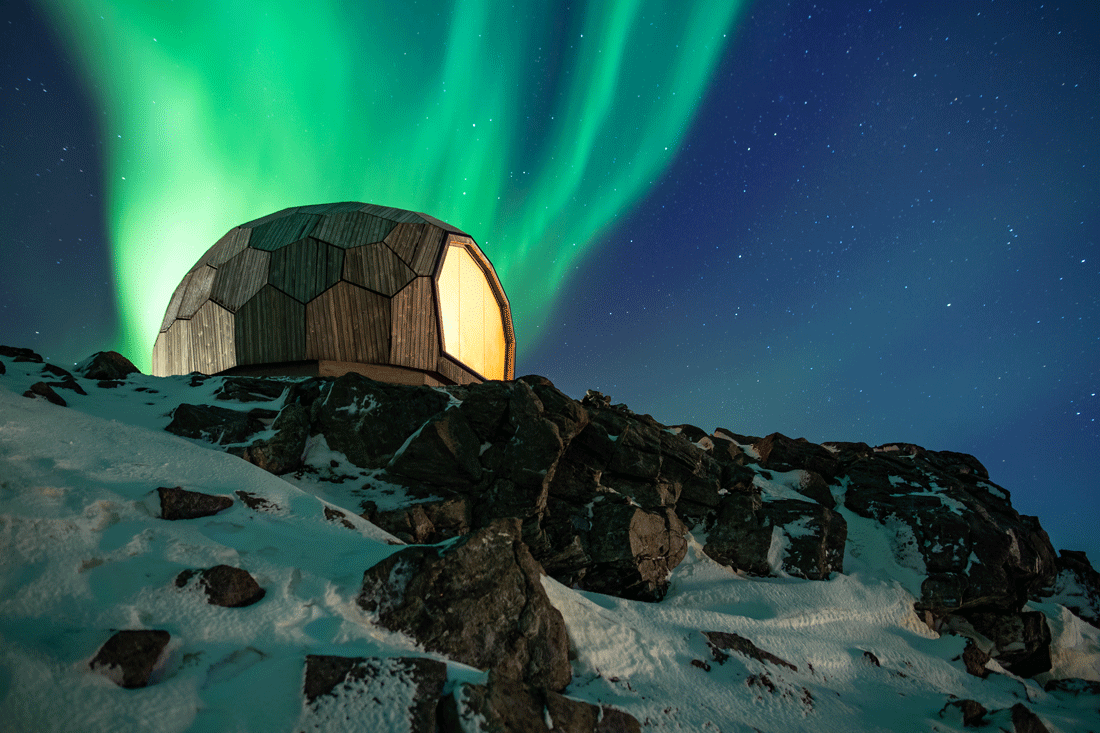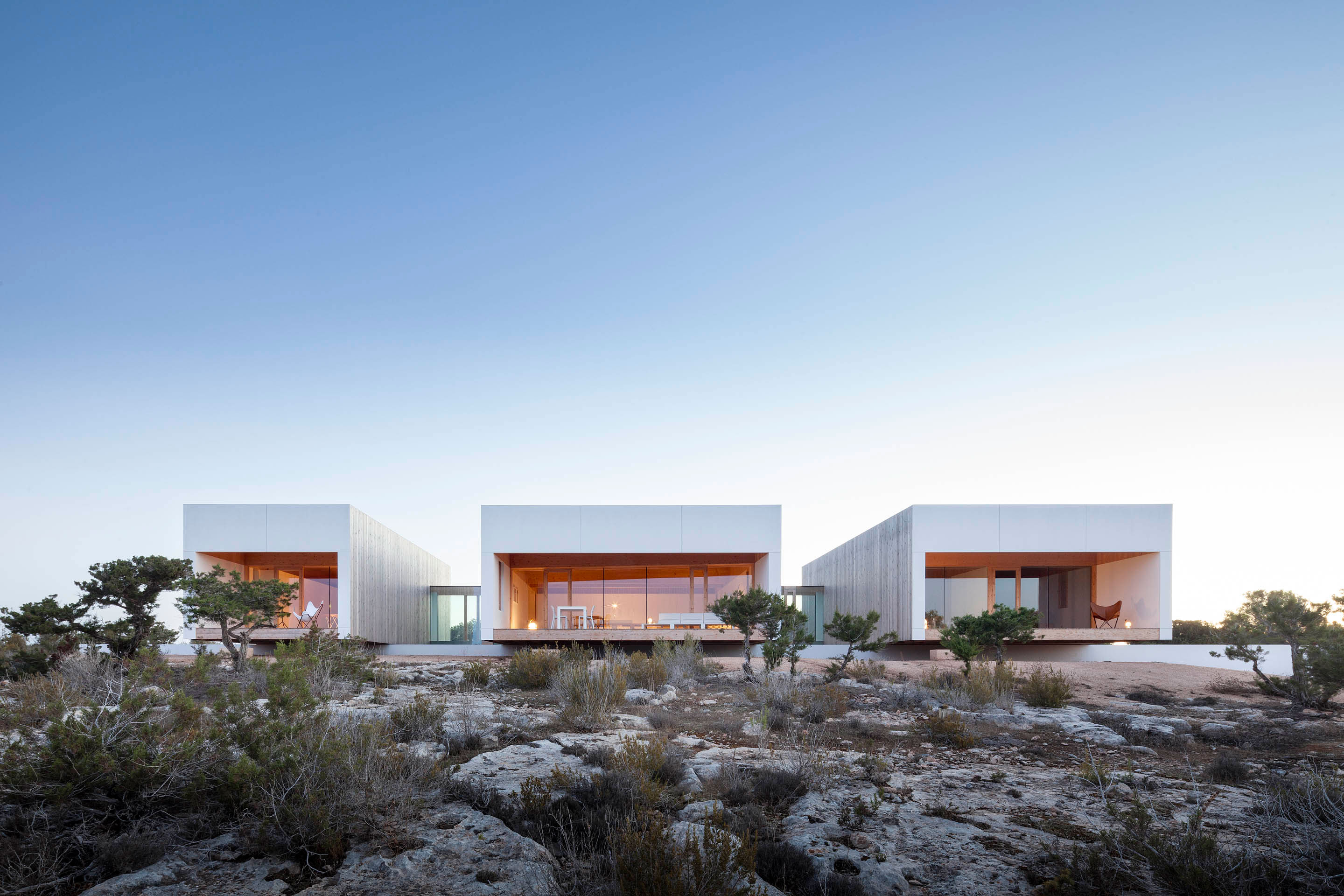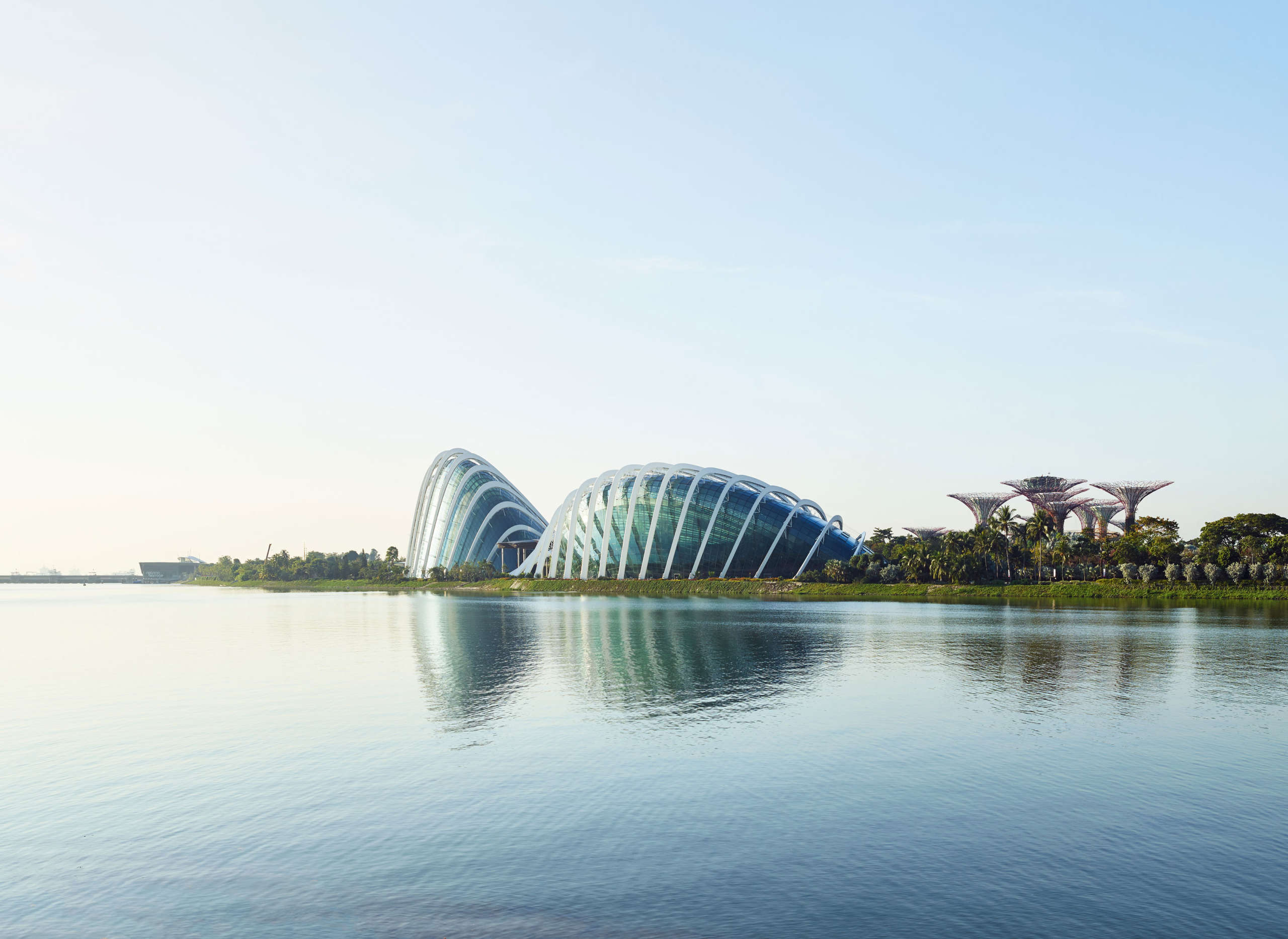
Description of the PV Cabin is provided by the Architect. Formerly the Neanderthal man lived in caves to take refuge. The choice of these stone dwellings, responded to the best orientation to protect from the winds, should have with air intake, light and enough space to store their food. Times have changed, but certain basic human needs have remained.

The work consists of a temporary refuge, for a young couple of climbers, lovers of rock sports. The main restriction was the limited surface, but the user’s physical ability allowed to increase the surface vertically, expanding the space with a double height. Programmatically, the basic and essential actions for living for short periods were accommodated, considering the minimum space for sleeping, eating, cleaning and allowing extra room for itinerant users.

The refuge is located in Las Trancas, Pinto, in the south-central zone of Chile. The town stands out for its mountain range landscape that hosts a high variety of extreme sports.

The land is accessed by a winding and wooded road. At the bottom of the lot, in a small clearing, the refuge is located. Behind him, a wall of considerable height interrupts the surrounding green. This open space in the middle of the forest will ensure sun, ventilation and natural lighting. The refuge is raised with wooden piles one and a half meters above the natural terrain to avoid contact with the snow in the winter season.

The idea of a uniform shell (walls and roof) that involves a retracted pediment, playing with the full of wood and glazed emptiness, is proposed. This full on the main facade replicates the verticality of the rock wall that is observed at the bottom of the land. The asymmetric break of the roof allows the correct draining of the snow. Internally, it generates greater amplitude for the attic that floats on the only closed volume.
Spatially, an open space is identified, on the ground floor the areas for cooking, eating, heating and working are organized. On the line of the kitchen and the bathroom, united by a small vertical scale if you locate a floating platform that in a certain part stands out to accommodate the sleeping area. To avoid saturating the small space, the floor, sky and wall are covered with the same material.
Project: PV Cabin
Architect: Lorena Troncoso-Valencia
Website: www.lorenatroncoso.cl/
Contact: lorenatroncosov@gmail.com
Location: Las Trancas, Pinto, Chile.
Built: 2016
Building Area: 24 m2
Photographs / Website: Cristóbal Caro
Builder: Constructora Bocaz, Chillán.
Website: www.constructorabocaz.cl/





2 Comments
Wolfgang
Lovely, but the bed-no rails or border, and the potential of rolling to your death in your sleep to bottom floor….hmmm…:)
karlvanes
Well, I guess if you’re going to live on the edge, you might as well sleep on the edge!